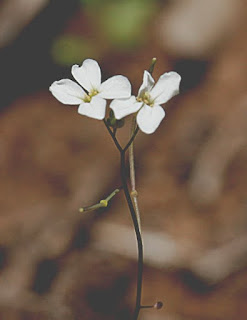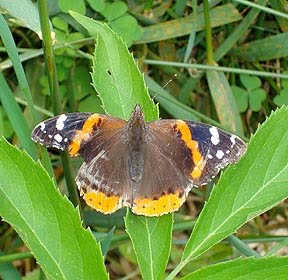Sunny and warm (70º). Birds all over the place, with few notable exceptions, hidden by all the foliage.
Good looks at Yellow Warblers, Redstarts, Blue-winged Warblers and Common Yellowthroats. Bald Eagles and Great Blue Herons flying overhead.
Great looks at Bellwort, Lupine, Wild Ginger, Virginia Waterleaf, Yellow Violet, Sand Cress, Yellow Pimpernel, Wild Geranium and Bedstraw ("sticky willy").
Sand Cress
Insects: Red Admiral, Eastern Tiger Swallowtail and several little orange butterflies that few too fast for an ID.
Red Admiral
Something about the way that bird was flying reminded me of a bat. Hmm... that's odd. I watched with my binoculars. It was a very large bat - and as it turned in the light, I realized it was a Hoary Bat, the largest bat in Wisconsin!
The Hoary Bat I met a decade ago
While it's unusual to see a day-flying bat of any species - it's not unheard of. I spotted this species flying during the day once before more than a decade ago - in a snowstorm in Maryland.
The word "hoary" refers to its white-frosted fur. This beautiful bat has a furred tail membrane.
Why was it out in the light of day?
It was probably hungry after a week of so-cold-the-bugs-aren't-flying temperatures. It seemed to be chasing that yellow butterfly - and it put on quite a show, staying in view for several minutes as it flew out over the slough.
Hoary bats, along with Red Bats and Silver-haired Bats are solitary, tree-roosting species. They're found throughout North America (and Hawaii). These bats feed on large prey - moths and beetles. They can eat 40% of their body weight in Mating occurs in the fall and the females give birth to 2 pups in May or June.
Wow!




No comments:
Post a Comment